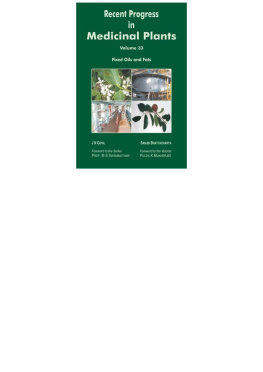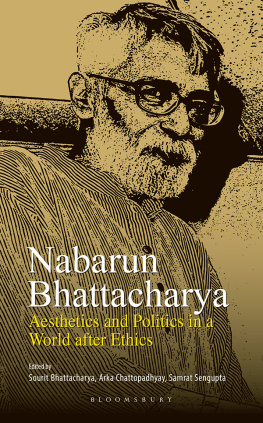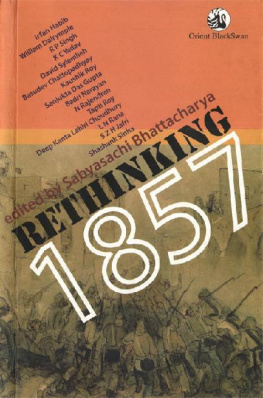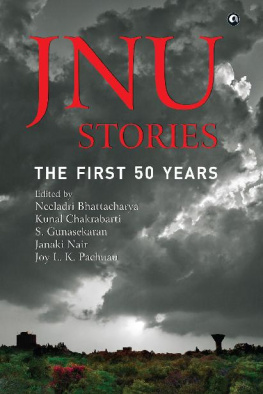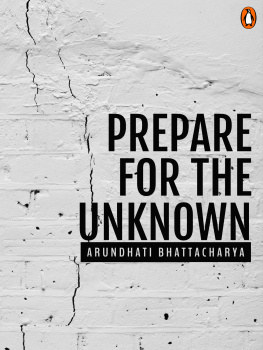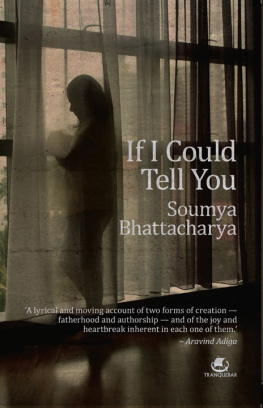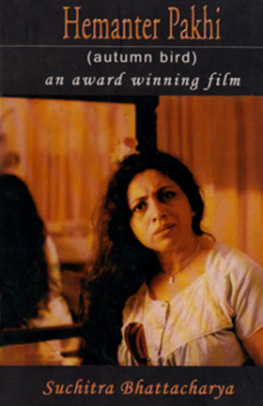Manoshi Bhattacharya - The Royal Rajputs
Here you can read online Manoshi Bhattacharya - The Royal Rajputs full text of the book (entire story) in english for free. Download pdf and epub, get meaning, cover and reviews about this ebook. year: 2008, publisher: Rupa & Co, genre: Detective and thriller. Description of the work, (preface) as well as reviews are available. Best literature library LitArk.com created for fans of good reading and offers a wide selection of genres:
Romance novel
Science fiction
Adventure
Detective
Science
History
Home and family
Prose
Art
Politics
Computer
Non-fiction
Religion
Business
Children
Humor
Choose a favorite category and find really read worthwhile books. Enjoy immersion in the world of imagination, feel the emotions of the characters or learn something new for yourself, make an fascinating discovery.
- Book:The Royal Rajputs
- Author:
- Publisher:Rupa & Co
- Genre:
- Year:2008
- Rating:4 / 5
- Favourites:Add to favourites
- Your mark:
- 80
- 1
- 2
- 3
- 4
- 5
The Royal Rajputs: summary, description and annotation
We offer to read an annotation, description, summary or preface (depends on what the author of the book "The Royal Rajputs" wrote himself). If you haven't found the necessary information about the book — write in the comments, we will try to find it.
The Royal Rajputs — read online for free the complete book (whole text) full work
Below is the text of the book, divided by pages. System saving the place of the last page read, allows you to conveniently read the book "The Royal Rajputs" online for free, without having to search again every time where you left off. Put a bookmark, and you can go to the page where you finished reading at any time.
Font size:
Interval:
Bookmark:
THE
Royal
RAJPUTS
THE
Royal
RAJPUTS
STRANGE TALES
AND
STRONGER TRUTHS
MANOSHI BHATTACHARYA

Copyright Manoshi Bhattacharya 2008
Published 2008 by

7/16, Ansari Road, Daryaganj,
New Delhi 110 002
All rights reserved.
No part of this publication may be reproduced, stored in a retrieval system, or transmitted, in any form or by any means, electronic, mechanical, photocopying, recording or otherwise, without the prior permission of the publishers.
Maps: Manoshi Bhattacharya
The author asserts the moral right to be identified as the author of this work
Typeset in Palatino Linotype by
Aakriti Printographics
154, Ansal Chambers-II
6 Bhikaji Cama Place,
New Delhi-66.
To
Ma
ACKNOWLEDGEMENTS
It has taken me close to three years to weave together from several historical sources a nearly uninterrupted tale. The inspiration behind the work lies in Lt Col Tods Annals and Antiquities of Rajasthan.
It is time to thank the following people:
HH Brijraj Singh, Maharao Raja of Kotah, who from a very early stage involved himself with the book and went through it with a fine toothcomb. To him I am indebted for the numerous historical corrections and help in channelling my thoughts; Kaushik who first sowed the germ of the idea in my mind; Roopa whose exact words were, Never let your reader be forced to pick up a second book to make sense out of yours; Randhir for flying to the rescue everytime; Andrew Cook for his help in locating Lieutenant Colonel Tods service documents; Smita Singh for sharing my vision and Milee Ashwarya for seeing it through to the end; Aruna Chakravarty for the quick lessons in English grammar; Commodore Asoke Kumar Bhattacharya and Jayashri Bhattacharya my parents, and my maternal grandfather, Shri GC Mukherji, for building up my repository of tales both historical and mythological.

PREFACE
The Royal Rajputs Strange Tales And Stranger Truths renders in simple language and in a concise form the story of Rajasthan. Dr Manoshi Bhattacharya has worked at untangling a web of myths, legends and folklore skilfully woven by the bards of Rajasthan one that would test the skills of many a reputed scholar. She has also read many learned narratives on the subject and produced a fine book.
Napoleon once remarked: what is history but a fable agreed upon, where history fails one turns to legends. Epics are passed down from generation to generation with a certain element of truth, weaving a fabric that holds a people together. The celebrated bards of Rajasthan kept this tradition alive. It was this tribe of wandering minstrels who recited and sang the tales of glory with vigour and passion infusing the haughty Rajputs blood with a surge of adrenaline and boundless pride driving them to acts of reckless gallantry. Fuelled with the traditional cup of fiery spirits and a generous dose of amal (opium), the Rajput warrior was a fearsome sight and a formidable adversary capable of prodigious feats of valour. They yearned only for victory or death. Glory was assured in any case.
This book will help the tourist both Indian and foreign to understand the history and legends of Rajasthan, the proud traditions and customs of the Rajputs. Those with a greater interest in history will perhaps be enthused to read and appreciate the real stuff that discerns fact from fable.

MAHARAO BRIJ RAJ SINGH OF KOTAH
CONTENTS

INTRODUCTION
Kolkata 26 August 1799: A seventeen-year-old disembarked at the rain-lashed port and looked about with interest. The new land was far from alien. His thoughts strayed for a fleeting moment to the little island home he had left behind. Beyond the stormy oceans lay the United Kingdom of Great Britain still reeling from the effects of the Napoleonic wars, as mad King Georgedreams. For many long years the British East India Company had had its army poised in the wings, biding time. In the biggest corporate takeover ever, they planned to grab the Grand Mughals possessions, a jewel that the British crown would then begin to lust after. It was on the shores of this land that James Tod stood; he was going to love her as dearly as his own.
The Tods were a widely travelled lot. James Tod Sr. had left his native Scotland to marry Mary Heatly of New York. Hers was an important family, her brothers having held posts as members of the prestigious civil service of the East India Company. James Sr too sought his fortune in India working as an Indigo planter at Mirzapur (Uttar Pradesh) and then retired to a comfortable life in England. His son, however chose a different path. Not for him the life of buying and selling indigo. Armed with a letter from his uncle, Patrick Heatly, James Tod Jr reported to the Companys headquarters.
Young James was attached to the 2nd Bengal European Regiment: an infantry regiment, which comprised entirely of European soldiers. He was promoted to lieutenant a year later and after a brief stint with the 14th Native Infantry Regiment, rejoined the 2nd Bengal. It was at this stage that he became involved with the initial efforts of the British in the survey and mapping of India. The Survey of India that had been set up thirty-two years ago had a gigantic project simmering for a while and on 10 April 1802 it was launched from Chennai as The Great Indian Arc of the Meridian. All surveyors, whether upon land or sea, contributed to the charting of the Indian subcontinent. Names like Lambton, Everest and Radhanath Sikdar, the man who would first calculate the height of Mount Everest, were to go down in history. Together the surveyors divided the land surface into a gigantic web of triangles that spanned mountains, torrents and raging seas. The surface of the earth was to be mapped in one long concerted effort. These peaceful progressive activities were to witness a dramatic shift in 1803. In a swift movement, Lord Lake occupied Delhi and the blind old emperor now ruled in name alone, a pensioner protected by the army of the East India Company.
That year the 2nd Bengal was transformed into a Marine Regiment and setting sail on board the Mornington, Lieutenant Tod left to serve in the Molucca Isles. He returned in 1805, and volunteered to join the 25th Bengal Native Infantry, which had been attached as escort to the British Esq., to the court of the Maratha leader, Daulat Rao Scindia. Scindia, who had recently lost his hold over Delhi, had encamped in the town of Rashmi, in Mewar - a state, which at the time, remained largely unmapped. Lieutenant Tod undertook the survey and charting of the routes used by the escort and the first to be completed was the Chittaurgarh to Udaipur route map.
In a letter to the government, Lieutenant Colonel RH Colebrooke, the surveyor general, noting that the lieutenant did this more from zeal to promote useful knowledge than from any pecuniary motive, recommended a surveyors allowance, of one-and-a-half-thousand rupees, for the period of employment. The remainder was to be calculated once the field book and journals were submitted. But the government seemed to think otherwise. The remuneration due to an assistant surveyor, that is, a sum of hundred rupees per month was deemed sufficient.
Next pageFont size:
Interval:
Bookmark:
Similar books «The Royal Rajputs»
Look at similar books to The Royal Rajputs. We have selected literature similar in name and meaning in the hope of providing readers with more options to find new, interesting, not yet read works.
Discussion, reviews of the book The Royal Rajputs and just readers' own opinions. Leave your comments, write what you think about the work, its meaning or the main characters. Specify what exactly you liked and what you didn't like, and why you think so.



